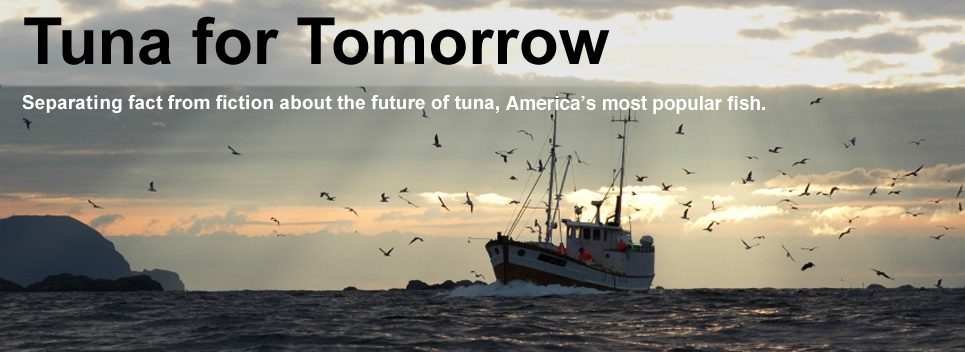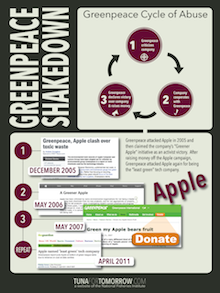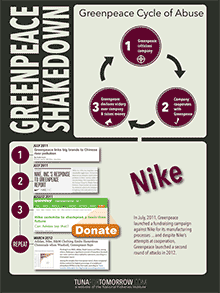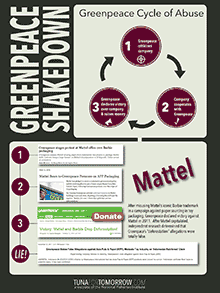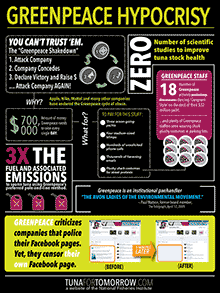Greenpeace has historically relied on the shock value of its campaigns to divert attention away from the lack of scientific consensus behind its false allegations. In the case of canned tuna that pattern continues.
The fact is Greenpeace is wrong on the science. Greenpeace itself is not actively working on any science-based tuna sustainability research and Greenpeace is aggressively trying to raise tens of thousands of dollars in donations for ŌĆ£tuna sustainabilityŌĆØ based on a manufactured crisis.
Launching blimps, producing violent, offensive videos aimed at children and harassing seafood-company employees, at the office and over the phone, are all part of a campaign designed to dazzle the average consumer with theatrics in order to avoid entering into a science-based dialogue.
This appears to be precisely what happened to New York Times food blogger Mark Bittman, who fell for GreenpeaceŌĆÖs antics and turned their talking points into a September 20 online column. Bittman naively parrotŌĆÖs GreenpeaceŌĆÖs rhetoric while endorsing with gusto the childish stunts perpetrated by the group.
Listening to GreenpeaceŌĆÖs puppets is one thing but becoming a Parrot is another. Perhaps Bittman and other members of the media should take a look behind the curtain before embracing Greenpeace.
Listen for yourself:


